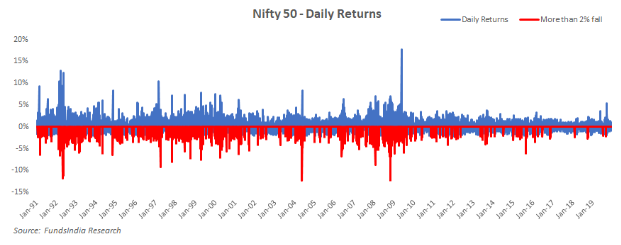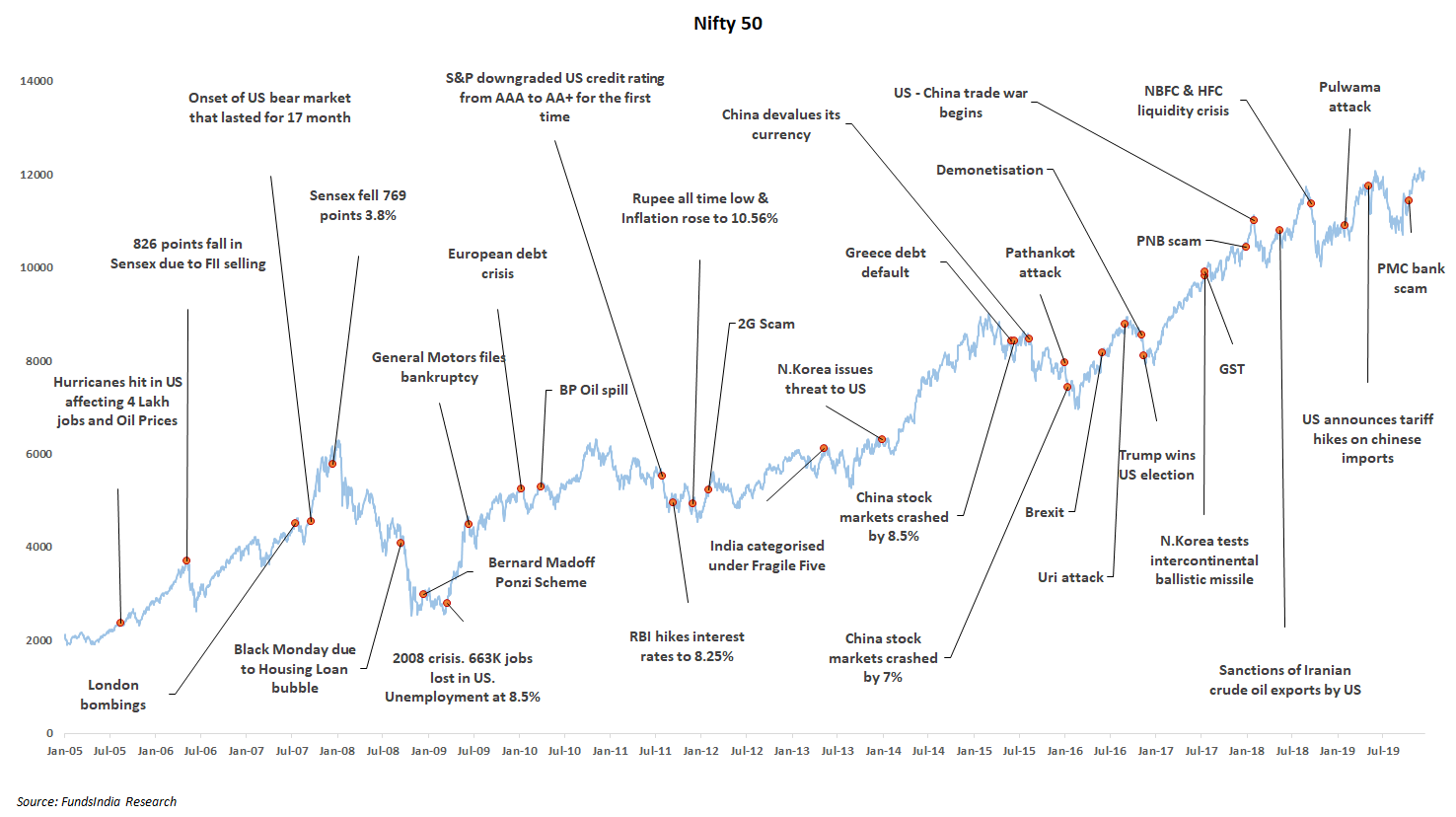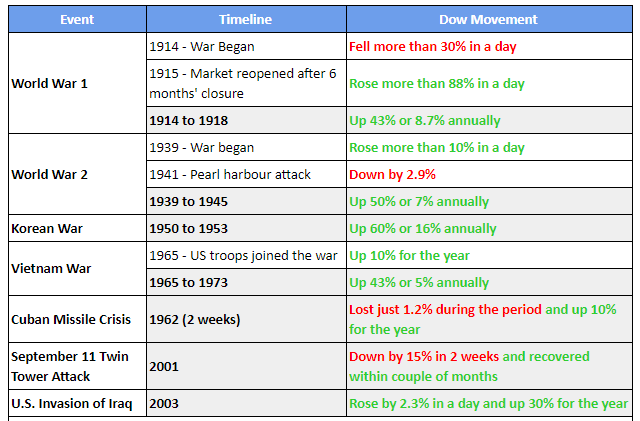Unless you are living under a rock, by now you should know about the US-Iran tension.
Here is a quick summary:
- The United States killed a top Iranian military commander general Qasem Soleimani in an airstrike in Iraq on Friday (03-Jan-2020).
- Iran declared it would no longer abide by any of the restrictions imposed by the Joint Comprehensive Plan of Action, known commonly as the Iran nuclear deal – including limitations on its enrichment of Uranium.
- In the early hours of Wednesday (08-Jan-2020), Iran launched missile attacks on US-led forces in Iraq in retaliation.
- After Iran’s attack, Mr Trump’s speech indicated a softened stance of no further military confrontation with Iran and said he was ready to embrace peace.
While no one knows exactly how future events can unfold, at the current juncture, US and Iran appear to have stepped away from the brink of a full-blown conflict. The last few days have seen a surge in gold and crude oil prices internationally and heightened volatility in equities.
The Nifty on 06-Jan-2020 was down by 1.9% on concerns of a possible increase in oil price. On 07-Jan-2020, Nifty was up by 0.5%. On 08-Jan-2020, Nifty was down by 0.2%. On 09-Jan-2020, Nifty was up by 1.6%.
The below post, more than our outlook on the event, is a peek into our thought process on how to approach such “crisis-like” events which is a perennial part of equity markets.
Should you be worried about the volatility?
The Nifty on 06-Jan-2020 was down by 1.9%. First, let us put this in perspective.

Since 1991, there have been ~540 days out of 7060 days where markets have fallen much more than 2% – i.e around 8% of the time.
In other words,
A daily fall of more than 2% has happened once every 13 days since 1991!
Sounds pretty common right!
But how to make this boring statistic scary?
Enter media headlines…

There you go. Now that looks a lot scarier.
But thankfully, now that you have had a peek at stock market history, you know this volatility is business as usual for equity markets.
Hey, but what about the US-Iran tension that the market is worried about?
Again let us put these “market scary” events in perspective. Do these events impact an investor in the long-run?

The above chart captures some of the major events that happened in the last 15 years (Jan-05 to Dec-19). Unnerved by all this, an investor who simply decided to stay invested in the markets, ended up getting a 606% return or 13.9% CAGR (Nifty 50 TRI)
The simple realization is that almost every year we have a few events about which the market is worried. We are never “crisis-less”.
Some lead to temporary corrections, many don’t. The keyword here is ‘temporary’.
The same story of equities providing decent long term returns despite the scary headlines has held true for the last 30 years!

So here is the simple essence –
Market corrections do not equal financial loss…unless you sell!
All that is fine. But what if this turns out into a full-fledged war? What will be the impact on markets?
While the previous periods of similar geopolitical events suggest that the impact on markets usually tend to be short-lived, the honest answer is “We don’t know how the event will unfold. Most importantly, even if we somehow knew that we still wouldn’t be able to predict how the markets will respond to that”
“I can’t recall ever once having seen the name of a market timer on Forbes’ annual list of the richest people in the world. If it were truly possible to predict corrections, you’d think somebody would have made billions by doing it.” – Peter Lynch
In our view, while equity markets track underlying earnings growth over the long run, consistently predicting market movements in the short term is next to impossible.
Let us explain why we don’t attempt to predict such events.
There are essentially two challenges
1. Geopolitical events by their nature are unpredictable
Think about it. Honestly, do you think anyone out there knows what Mr Trump plans next?
2. Market’s reaction to war and geopolitical crises can be counter-intuitive
It’s difficult to predict how investors will react to such events as so much of the market’s reaction to these events is context-dependent. Sometimes the market response to events can be just the opposite of what you think.

Source: https://fortune.com/2020/01/03/iran-us-conflict-stock-market-oil-prices/
We cannot predict but we can prepare
While it is extremely disappointing to hear the truth that we can’t predict the short term movements of equity markets, the paradox is that the more you realize you don’t have control over the market in the short run, the more you actually gain control.
Come again. How in the world does that work?
Simple. Because you now suddenly start thinking of a strategy to “prepare” for a wider range of outcomes rather than for a single outcome that you are trying to predict.
Fair enough. So how do we prepare?
First the basics,
- Make sure the money for goals needed in the next 5 years is not into equities
- Make sure you have an emergency fund (preferably via safe liquid funds) to cover for at least 6 months of your expenses
- Is your current asset allocation i.e your split across various asset classes such as equity, debt, gold etc. in line with your risk appetite (if you are panicking right now, then most likely it’s not)
Now to the actual plan.
If the whole US-Iran tension subsides, then it is life as usual.
Simply, leave your portfolios untouched to compound in peace.
What if markets start to fall due to some unexpected turn of events? Should you sell now and enter later?
This is the most dangerous time as intuitively your natural response is to expect markets to fall further as things usually look like they will get worse.
Now while you might resist the temptation to act (assuming you are sold on the you-can’t-predict -but-only-prepare-philosophy), however, if the market continues to fall further then suddenly “regret” kicks in.
While there is overwhelming evidence that no one can predict, you realise that actually, you did predict the fall.
If only you had listened to your own intuition and sold out.
Any further fall and you are convinced – to hell with this “can’t predict” crap.
And you utter the most dangerous words,
“Let me move out and enter later”
The remaining part of the story is common folklore on why investors don’t make returns in equities, blah blah…
The biggest issue in getting out is to again get back into equity markets. Even if you are right the first time, to get back in, you need to be right twice.
And while we imagine the equity market trajectory to be a simple straight line, there are too many false upsides during a fall. This lulls you into complacency (read as “I have seen this before”), and when the actual recovery happens, you think it’s yet another false rally and by the time you realise this one is the real one, it is usually too late.
So how do we handle this?
When it comes to decision-making, less is more and you need to reduce the number of decisions to be taken. Most importantly you need to have a clear pre-decided plan on WHEN and WHAT decision to take.
A simple plan might look like:
- If the market falls by 10% then I will…
- If the market falls by 20% then I will…
- If the market falls by 30% then I will…
- If the market falls by 40% then I will…
- If the market falls by 50% then I will…
Here is what a sample plan might look like..(this can be customized based on your risk profile, time frame and plan)
- 10% fall – No action
- 20% fall – Move 20% from debt portion (intended for tactical allocation) to equities
- 30% fall – Move next 30% from debt portion (intended for tactical allocation) to equities
- 40% fall – Move next 40% from debt portion (intended for tactical allocation) to equities
- 50% fall – Move next 10% from debt portion (intended for tactical allocation) to equities
This will ensure that you are better prepared to take advantage of the market if it falls further.
Now is this easy to pull off?
To be honest, most of us will end up being more fearful than we expect when our portfolio is falling.
Worst case if you fail to stick to the plan, you can always go back and find out what really happened. And maybe all along, you had overestimated your ability to handle a falling market. So the next time, this can serve as a good reminder to go for a more conservative portfolio.
While we have no clue how the US-Iran tension will pan out, even if there is a fall, as long as you have your plan ready and the discipline to execute it, you can convert this into an opportunity rather than a crisis.
Remember…
“All past corrections look like opportunities while the current ones always look like a crisis”
Do you have your plan ready, yet?
This article was originally published on MoneyControl. Click here to read it.






